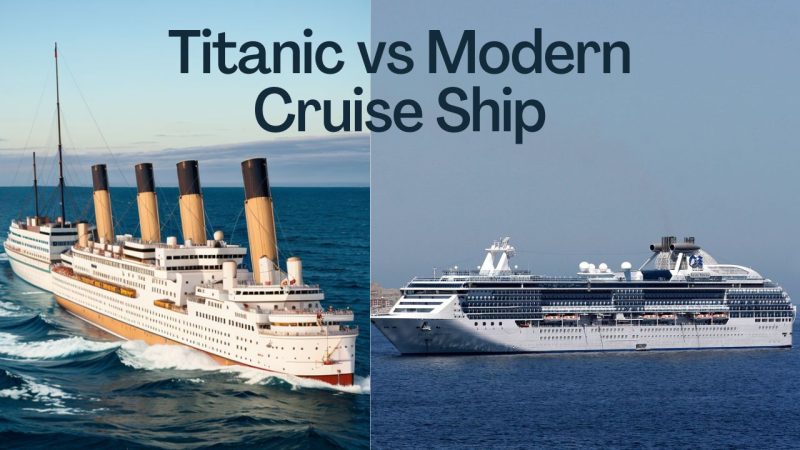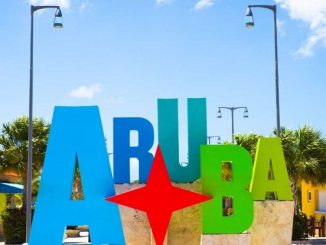Titanic vs Modern Cruise Ship: The Titanic and the Evolution of Cruise Ships
The Tragic Story of the Titanic
Imagine stepping aboard a ship that promises luxury, adventure, and an unforgettable journey across the ocean. Now, picture two such vessels: the iconic Titanic and a state-of-the-art modern cruise ship. While both offer unique experiences, they are worlds apart in terms of technology, safety, and amenities.
The sinking of the Titanic in 1912 was a monumental tragedy that shook the world. The lack of life-saving equipment and inadequate safety measures led to the loss of over 1,500 lives, highlighting the crucial need for maritime safety regulations.
In this article, we will delve into the fascinating comparison of the Titanic vs. modern cruise ships, exploring how far maritime travel has come since that fateful night in 1912.

Titanic vs Modern Cruise Ship: A Voyage Through Time
The Titanic: A Marvel of Its Time
The Grandeur of the Titanic
When the RMS Titanic set sail on April 10, 1912, it was hailed as the largest and most luxurious ship ever built. At 882 feet long and weighing over 46,000 tons, it was a floating palace designed to cater to the elite of society. The ship boasted opulent interiors with grand staircases, lavish dining rooms, and even a swimming pool—a rarity for its time.
Technological Limitations
Despite its grandeur, the Titanic was limited by the technology of its era. It had a top speed of 23 knots and relied on coal-fired steam engines for propulsion. Communication was rudimentary, with Morse code being the primary means of sending distress signals. Safety measures were also lacking; the ship carried only enough lifeboats for about half its passengers.
The Tragic End
The Titanic’s tragic sinking on April 15, 1912, after hitting an iceberg is well-documented. Over 1,500 lives were lost due to inadequate lifeboats and delayed rescue efforts. This disaster led to significant changes in maritime safety regulations.
The Rise of Modern Cruise Liners
Fast forward to the present day, and we witness the evolution of cruise ships into floating marvels of technology and luxury. With advancements in design, construction, safety features, and passenger amenities, modern cruise liners offer a safe and opulent travel experience unlike any other.
Modern cruise ships dwarf the Titanic in both size and capacity. For instance, Royal Caribbean’s Symphony of the Seas is over 1,180 feet long and can accommodate nearly 7,000 passengers—more than triple the Titanic’s capacity. These floating cities offer a wide range of activities and amenities that cater to diverse interests.
Advanced Technology
Today’s cruise ships are marvels of engineering and technology. They feature advanced navigation systems like GPS and radar to ensure safe voyages. Communication is seamless with satellite phones and internet access available throughout the ship. Propulsion systems have also evolved; many modern ships use diesel-electric engines that are more efficient and environmentally friendly.
Unparalleled Amenities
Modern cruise ships offer amenities that would have been unimaginable in 1912. From rock climbing walls and water parks to Broadway-style theaters and gourmet dining options, these ships provide endless entertainment for passengers of all ages. Health and wellness facilities like spas, gyms, and medical centers ensure a comfortable journey.

Design and Construction: From Rivets to Modern Engineering Marvels
The Titanic Era Construction Methods and Materials
The Titanic, constructed in the early 20th century, was built using traditional riveting techniques and primarily relied on steel for its structure. Rivets held the massive ship together, but this construction method ultimately contributed to the tragic sinking due to the inability of the rivets to withstand the impact with the iceberg.
Modern Shipbuilding Techniques and Materials
In stark contrast, modern cruise ships are constructed using state-of-the-art engineering methods and advanced materials. Welding has replaced riveting, ensuring a stronger and more secure vessel. High-strength steel and aluminum alloys are now commonly used, enhancing durability while reducing weight for improved fuel efficiency.
Safety Features: Lessons Learned and Cutting-Edge Technology
The Titanic’s Safety Flaws: Titanic vs Modern Cruise Ship
Consequences of Inadequate Safety Measures
The Titanic’s tragic sinking highlighted the critical importance of robust safety features. The lack of a sufficient number of lifeboats, inadequate watertight compartments, and outdated communication systems all contributed to the high loss of life.
Modern Cruise Ship Safety Innovations
Enhanced Navigation Systems
Modern cruise ships are equipped with state-of-the-art navigation technology, including GPS, radar systems, and advanced monitoring tools, ensuring precise navigation and collision avoidance.
Emergency Protocols and Training
Stringent emergency protocols, regular drills, and well-trained crew members are now standard on cruise ships, enabling swift and coordinated responses to any onboard emergencies.
Life-Saving Equipment
From advanced lifeboats with modern davit systems to sophisticated life jackets and evacuation procedures, today’s cruise ships prioritize passenger safety above all else.
Passenger Amenities: From Basic Accommodations to Floating Resorts
The Titanic Era: Basic Accommodations
Accommodations on Early Cruise Ships:
- Basic cabins with shared facilities.
- Simplistic decor and limited comfort.
- Minimal entertainment options.
Dining Experience:
- Simple dining halls serving standard meals.
- Limited variety in food choices.
Modern Cruise Liners: Floating Resorts: Titanic vs Modern Cruise Ship
Luxurious Amenities:
- Spacious cabins with private balconies.
- Stylish and comfortable furnishings.
- State-of-the-art entertainment systems in every room.
Entertainment Options:
- Broadway-style shows, live music, and comedy performances.
- Cinemas, water parks, and sports facilities.
Dining Delights:
- Multiple specialty restaurants offering diverse cuisines.
- Gourmet dining experiences with renowned chefs.
- 24/7 room service for ultimate convenience.
Modern cruise ships have truly evolved from the basic accommodations of the Titanic era to become floating resorts with a plethora of luxurious amenities, top-notch entertainment options, and exquisite dining experiences.
Environmental Impact: Sustainability and Eco-Friendly Initiatives
The Environmental Impact of Early Cruise Ships and the Titanic Era
During the early days of cruise ships, environmental concerns were often overlooked. The Titanic era saw vessels using coal as their primary source of fuel, emitting pollutants into the air and water. Additionally, waste disposal practices were rudimentary, leading to pollution of the oceans.
Modern Cruise Lines’ Efforts Towards Sustainability
Today, cruise lines are taking significant steps to reduce their environmental footprint. They have implemented advanced wastewater treatment systems to ensure that only clean water is discharged back into the sea. Furthermore, many ships have adopted energy-efficient technologies to minimize fuel consumption and emissions.
Operating on Liquefied Natural Gas (LNG)
Some modern cruise ships are leading the way by using liquefied natural gas (LNG) as a cleaner alternative to traditional fuels. LNG helps in reducing harmful emissions, making these vessels more eco-friendly compared to their predecessors.
Conclusion: Titanic vs Modern Cruise Ship
In conclusion – comparing titanic vs modern cruise ship reveals how far we’ve come since those early days when crossing oceans meant braving potential perils without many comforts we take granted today! While titanic remains an enduring symbol representing human ambition & tragedy alike – our advancements have ensured safer & more enjoyable journeys across seas now possible thanks largely due technological innovations coupled stringent regulatory oversight aimed protecting both passengers & environment alike!
So next time you board one these magnificent vessels remember you’re partaking legacy spanning over century filled triumphs tragedies alike shaping future maritime travel forevermore! Bon voyage!
Key Differences between the Titanic and Modern Cruise Ships
- The Titanic lacked adequate safety measures, while modern cruise ships boast state-of-the-art navigation systems and stringent emergency protocols.
- Modern vessels prioritize passenger safety with advanced life-saving equipment, a stark contrast to the Titanic’s shortcomings.
- Environmental impact has been a major focus for contemporary cruise lines, implementing eco-friendly initiatives that were absent during the Titanic era.
The Future of Cruise Ship Technology: Titanic vs Modern Cruise Ship
Looking ahead, the future of cruise ship technology promises even more innovation. With a heightened focus on sustainability, cruise lines are exploring alternative fuels like Liquefied Natural Gas (LNG) to reduce emissions and minimize environmental impact. Advanced technologies in ship construction, safety features, and passenger amenities are set to further enhance the cruising experience, ensuring both luxury and security for travelers.




Be the first to comment